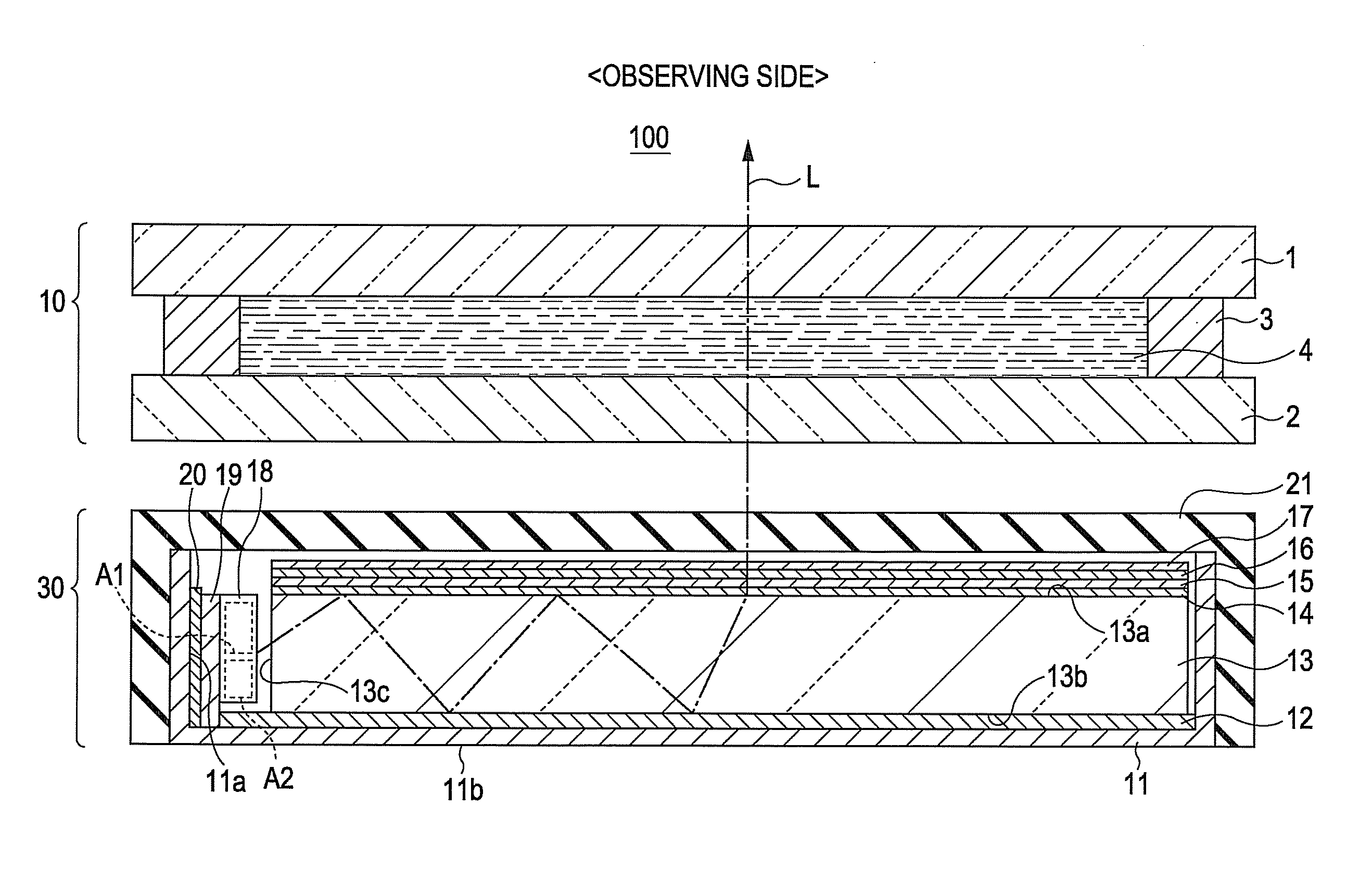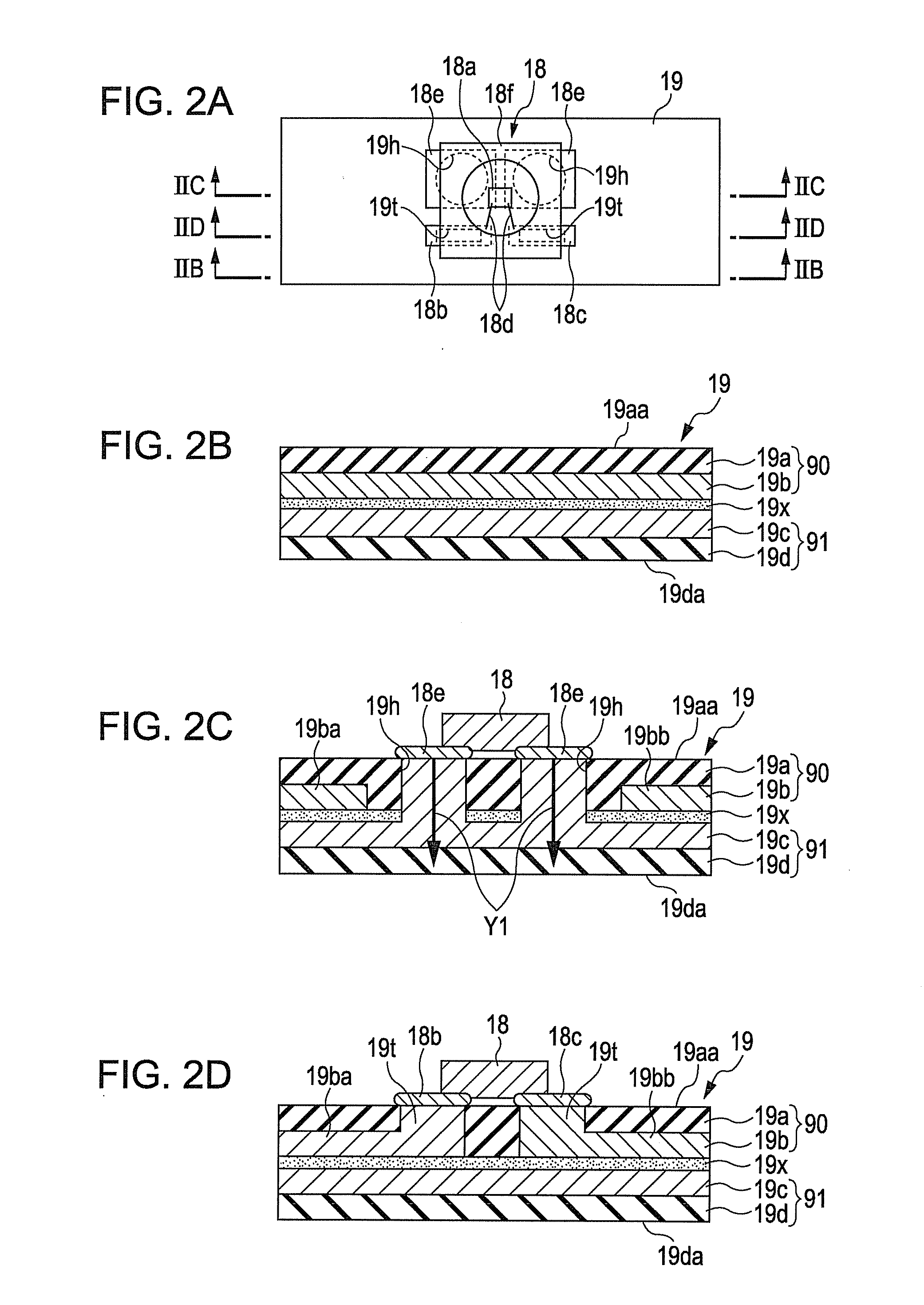Illuminating device, electro-optic device, and electronic apparatus
a technology of electrooptic devices and electronic devices, applied in the field of illumination devices, can solve the problems of low reliability, low luminous energy of led used as the light source in known portable backlights, and inability to meet the requirements of high brightness, so as to enhance the reliability of light sources and improve insulation and heat radiation
- Summary
- Abstract
- Description
- Claims
- Application Information
AI Technical Summary
Benefits of technology
Problems solved by technology
Method used
Image
Examples
modification 1
[0089]The flexible substrate 19 in the above-described embodiment has the insulative adhesive layer 19x between the first metal layer 19b and the second metal layer 19c. In addition to the adhesive layer 19x, an insulating layer similar to the first insulating layer 19a or the second insulating layer 19d may be disposed between the first metal layer 19b and the second metal layer 19c.
modification 2
[0090]The illuminating device 30 of the invention does not necessarily require the heat-conductive adhesive tape 20. The supported surface 19da of the second insulating layer 19d may be in direct close contact with the substrate-supporting surface 11a, as shown in FIG. 3B.
modification 3
[0091]The flexible substrate 19 may not have the second insulating layer 19d that is in contact with one surface of the electrically isolated second metal layer 19c. More specifically, this surface 19ca of the second metal layer 19c acts as the supported surface so as to be in contact with the substrate-supporting surface 11a of the first frame 11 with the heat-conductive adhesive tape 20 in between, as shown in FIG. 4A.
PUM
 Login to View More
Login to View More Abstract
Description
Claims
Application Information
 Login to View More
Login to View More - R&D
- Intellectual Property
- Life Sciences
- Materials
- Tech Scout
- Unparalleled Data Quality
- Higher Quality Content
- 60% Fewer Hallucinations
Browse by: Latest US Patents, China's latest patents, Technical Efficacy Thesaurus, Application Domain, Technology Topic, Popular Technical Reports.
© 2025 PatSnap. All rights reserved.Legal|Privacy policy|Modern Slavery Act Transparency Statement|Sitemap|About US| Contact US: help@patsnap.com



